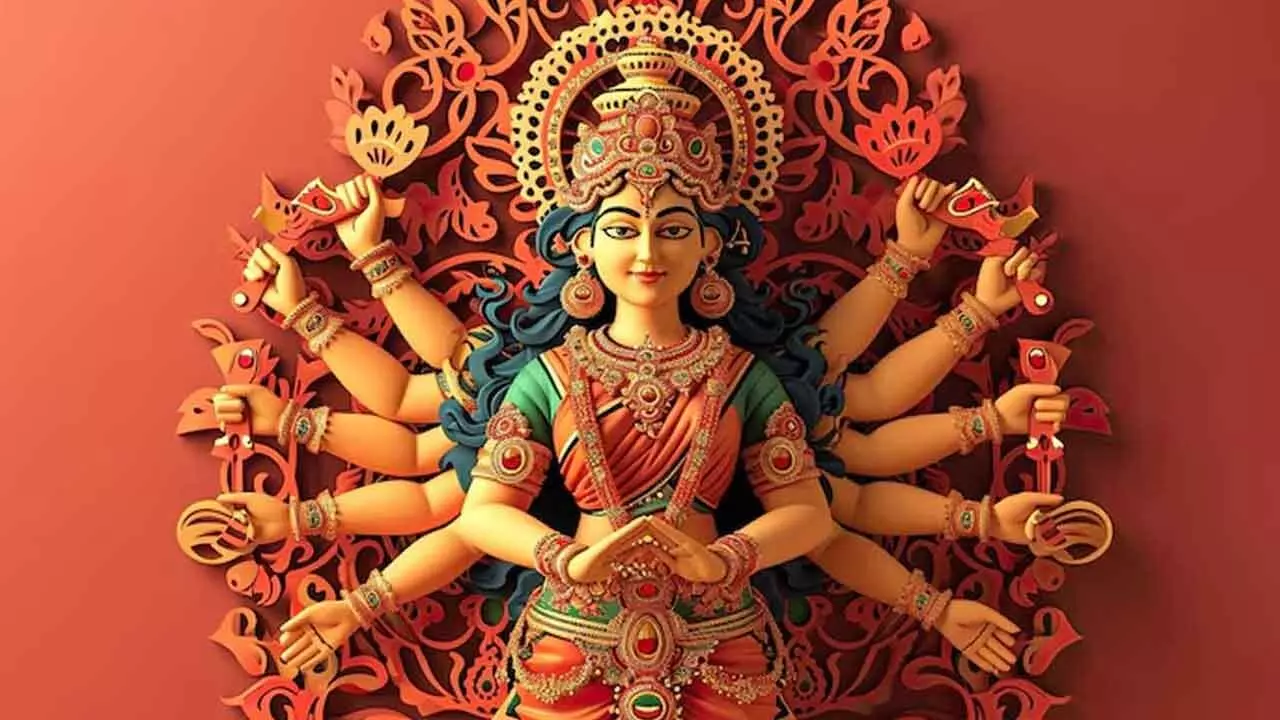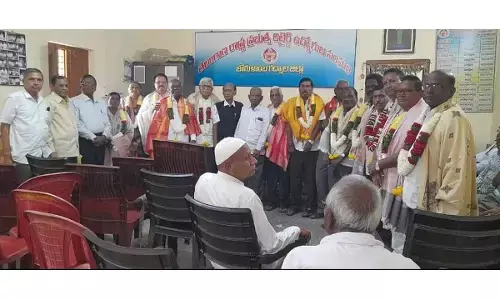Navratri 2024 Ghatasthapana: Shubh Muhurat, Rituals, Puja Samagri, and Significance

Navratri, one of the most revered Hindu festivals, is celebrated with immense devotion and enthusiasm throughout India. This nine-day festival is dedicated to the worship of Goddess Durga and symbolizes the triumph of good over evil. In 2024, Navratri will be observed from October 3 to October 12. The festival commemorates Goddess Durga’s victory over the demon king Mahishasura.
The celebration begins with Ghatasthapana on the first day, a significant ritual that marks the commencement of Navratri. Devotees worship Goddess Durga in her nine forms, known as 'Navdurga,' during this sacred period. Each day of Navratri is dedicated to a different manifestation of the goddess, and the festival culminates with Dussehra or Vijayadashmi, representing the ultimate victory of righteousness.
Ghatasthapana: Date and Shubh Muhurat
Ghatasthapana, also known as Kalash Sthapana, is a crucial ritual that initiates the nine-day fasting and prayers observed by devotees. It is considered auspicious to perform Ghatasthapana during the first one-third of the day when Pratipada Tithi prevails. Performing this ritual during Amavasya or at night is not recommended.
As per the Drik Panchang, the Pratipada Tithi for Navratri 2024 will start at 12:18 PM on October 3 and conclude at 2:58 PM on October 4. The most favourable time to perform Ghatasthapana is during the Dvi-Svabhava Kanya Lagna on the first day of Navratri.
Ghatasthapana 2024: Shubh Muhurat and Timings
Ghatasthapana Muhurat: 6:30 AM to 7:31 AM
Duration: 01 hour 02 minutes
Abhijit Muhurat: 12:03 PM to 12:51 PM
Duration: 48 minutes
Ghatasthapana: Puja Rituals
Ghatasthapana is a ritual that invokes Goddess Durga’s presence in the home for the next nine days. A sacred Kalash (holy pot) is placed in the most auspicious corner or prayer area of the house. Devotees worship the goddess by offering prayers, chanting hymns, and observing a fast. The Kalash symbolizes the goddess, and her presence is believed to bless the household throughout the festival.
Ghatasthapana Puja Samagri
The following items are essential for performing the Ghatasthapana puja:
Incense sticks
Barley seeds
Honeycomb
Sugar
Panchmeva (a mix of five dry fruits)
Mace
Saffron
Turmeric bales
Fresh flowers
Coconut
Sand
Clay
Betel leaves
Cloves
Bel leaves
Mango leaves
A picture or idol of Goddess Durga
Turmeric powder
Kalash (holy pot)
Milk
Fruits
Sweets
Mustard seeds
During the Ghatasthapana ritual, devotees also light earthen lamps and recite mantras dedicated to Goddess Durga. Lighting a lamp each day of Navratri is considered highly auspicious.
Ghatasthapana 2024: Significance
Ghatasthapana marks the beginning of the spiritual practices and fasting observed by devotees during Navratri. This ritual holds immense significance as it initiates the devotees’ spiritual journey for the nine-day festival. During these days, devotees adopt a satwik lifestyle, refraining from certain foods and eating only once a day. The Ghatasthapana ceremony sets the tone for the entire Navratri period, leading devotees towards devotion, discipline, and spiritual growth.
By observing this sacred ritual, devotees invite the divine blessings of Maa Durga into their lives, ensuring peace, prosperity, and protection throughout the nine days of Navratri.

















